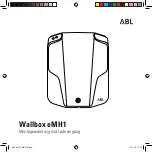
DRIVING YOUR HYUNDAI
2- 11
heat, which reduces their effectiveness and
may lead to more serious consequences.
o Take care of your tires. Keep them inflated
to the recommended pressure. Incorrect infla-
tion, either too much or too little, results in
unnecessary tire wear. Check the tire pres-
sures at least once a month.
o Be sure that the wheels are aligned cor-
rectly. Improper alignment can result from
hitting curbs or driving too fast over irregular
surfaces. Poor alignment causes faster tire
wear and may also result in other problems
as well as greater fuel consumption.
o Keep your car in good condition. For better
fuel economy and reduced maintenance
costs, maintain your car in accordance with
the maintenance schedule in Section 5. If
you drive your car in severe conditions,
more frequent maintenance is required (see
Section 5 for details).
o Keep your car clean. For maximum service,
your car should be kept clean and free of
corrosive materials. It is especially impor-
tant that mud, dirt, ice, etc. not be allowed to
accumulate on the underside of the car. This
extra weight can result in increased fuel
consumption and also contribute to corro-
sion.
o Travel lightly. Don't carry unnecessary weight
in your car. Weight is an enemy of good fuel
economy.
o Don't let the engine idle longer than neces-
sary. If you are waiting (and not in traffic),
turn off your engine and restart only when
you're ready to go.
o Remember, your car does not require ex-
tended warm-up. As soon as the engine is
running smoothly, you can drive away. In
very cold weather, however, give your en-
gine a slightly longer warm-up period.
o Don't "lug" or "over-rev" the engine. Lugging
is driving too slowly in too high a gear
resulting in the engine bucking. If this hap-
pens to you, shift to a lower gear.
Over-revving is racing the engine beyond its
safe limit. This can be avoided by shifting at
the recommended speeds.
o Use your air conditioning sparingly. The air
conditioning system is operated by the en-
gine power so your fuel economy is reduced
when you use it.
SC160A1-F
SMOOTH CORNERING
Avoid braking or gear changing in corners,
especially when roads are wet. Ideally, corners
should always be taken under gentle accelera-
tion. If you follow these suggestions, tire wear
will be held to a minimum.
SC170A1-E
WINTER MOTORING
The onset of winter conditions subject motor
vehicles to greater operating demands. There-
fore, the following suggestions will assist in
maintaining peak performance and reliability
during these periods:
ZC170B1-E
Electrical System
Winter conditions impose severe demands upon
vehicle electrical systems, particularly the charg-
ing circuit. The battery condition and perfor-
mance along with the alternator performance
and drive belt condition should be checked prior
to the onset of winter.
ZC170C1-E
Anti-freeze/Corrosion inhibitor
The cooling system must always contain an
Ethylene-Glycol based anti-freeze solution. The
system is filled during manufacture with solu-
tion of the correct strength which should be
checked before the onset of winter and adjust-
ed or changed as required.
NOTE:
The anti-freeze solution contains a corro-
sion inhibitor to prevent degradation of the
aluminum castings contained within the
engine. Therefore, never, drain the system
and refill with water only.
In addition, anti-freeze solution must ALWAYS
be used in vehicles fitted with air conditioning,
to prevent the heater matrix from freezing and
subsequently bursting with the refrigeration sys-
tem in use.
















































